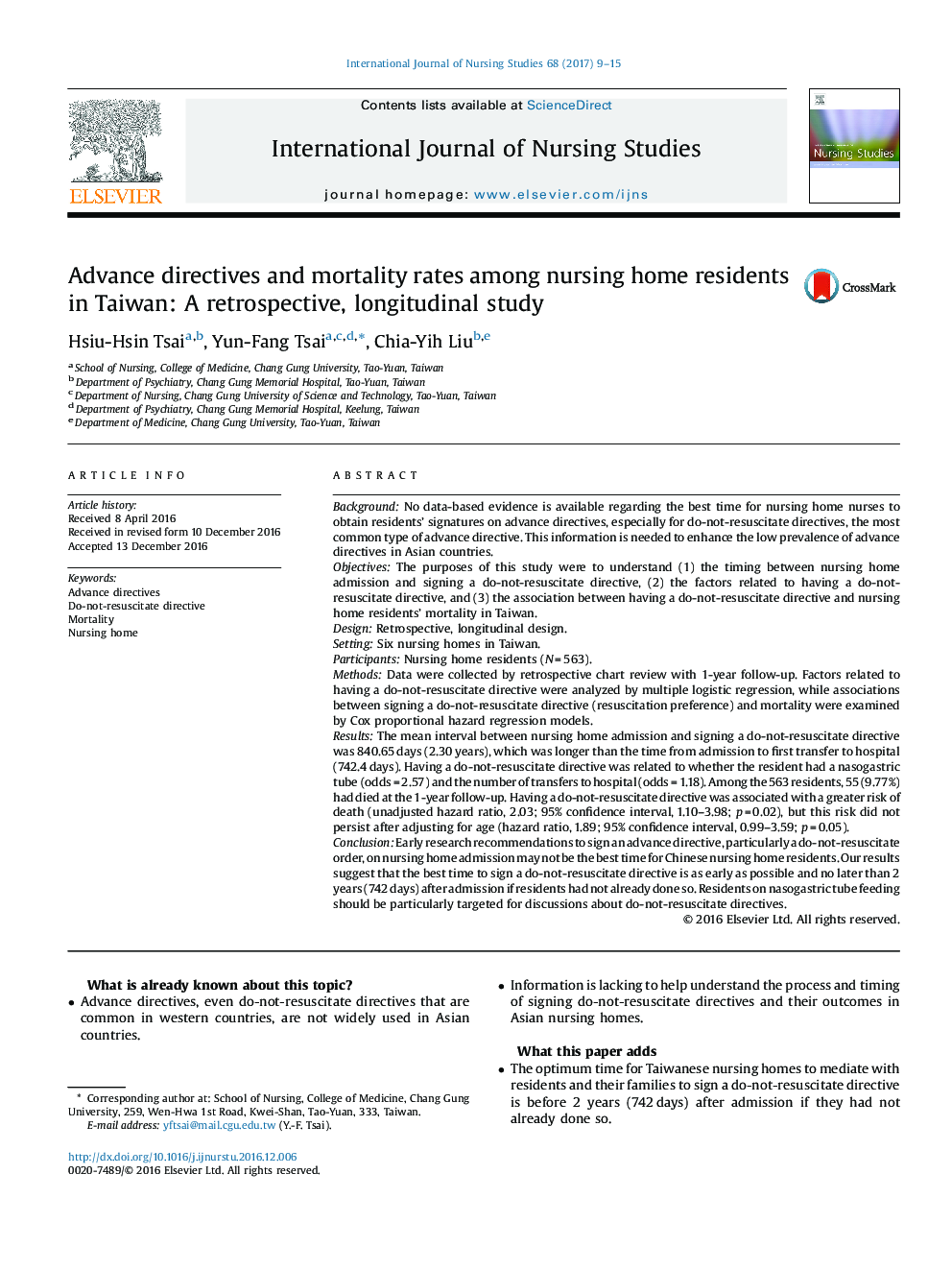| کد مقاله | کد نشریه | سال انتشار | مقاله انگلیسی | نسخه تمام متن |
|---|---|---|---|---|
| 5121025 | 1486501 | 2017 | 7 صفحه PDF | دانلود رایگان |
BackgroundNo data-based evidence is available regarding the best time for nursing home nurses to obtain residents' signatures on advance directives, especially for do-not-resuscitate directives, the most common type of advance directive. This information is needed to enhance the low prevalence of advance directives in Asian countries.ObjectivesThe purposes of this study were to understand (1) the timing between nursing home admission and signing a do-not-resuscitate directive, (2) the factors related to having a do-not-resuscitate directive, and (3) the association between having a do-not-resuscitate directive and nursing home residents' mortality in Taiwan.DesignRetrospective, longitudinal design.SettingSix nursing homes in Taiwan.ParticipantsNursing home residents (N = 563).MethodsData were collected by retrospective chart review with 1-year follow-up. Factors related to having a do-not-resuscitate directive were analyzed by multiple logistic regression, while associations between signing a do-not-resuscitate directive (resuscitation preference) and mortality were examined by Cox proportional hazard regression models.ResultsThe mean interval between nursing home admission and signing a do-not-resuscitate directive was 840.65 days (2.30 years), which was longer than the time from admission to first transfer to hospital (742.4 days). Having a do-not-resuscitate directive was related to whether the resident had a nasogastric tube (odds = 2.57) and the number of transfers to hospital (odds = 1.18). Among the 563 residents, 55 (9.77%) had died at the 1-year follow-up. Having a do-not-resuscitate directive was associated with a greater risk of death (unadjusted hazard ratio, 2.03; 95% confidence interval, 1.10-3.98; p = 0.02), but this risk did not persist after adjusting for age (hazard ratio, 1.89; 95% confidence interval, 0.99-3.59; p = 0.05).ConclusionEarly research recommendations to sign an advance directive, particularly a do-not-resuscitate order, on nursing home admission may not be the best time for Chinese nursing home residents. Our results suggest that the best time to sign a do-not-resuscitate directive is as early as possible and no later than 2 years (742 days) after admission if residents had not already done so. Residents on nasogastric tube feeding should be particularly targeted for discussions about do-not-resuscitate directives.
Journal: International Journal of Nursing Studies - Volume 68, March 2017, Pages 9-15
